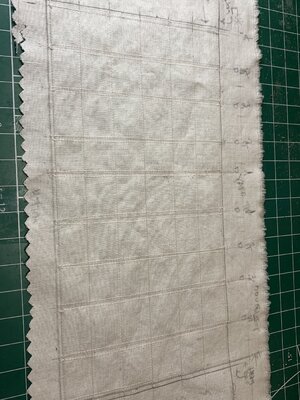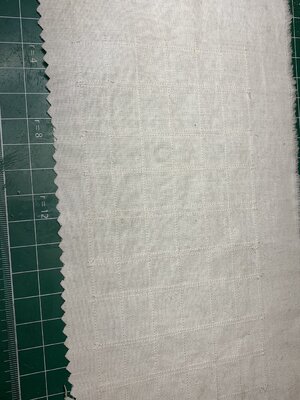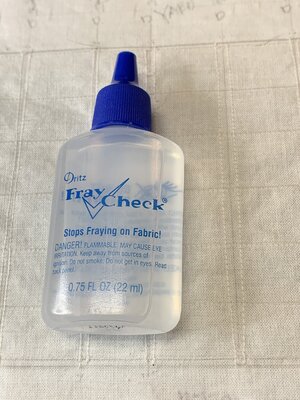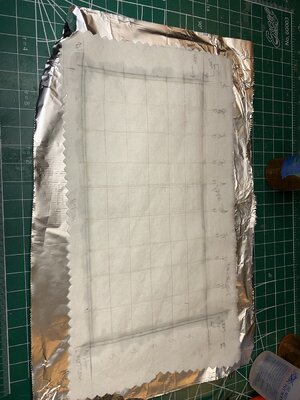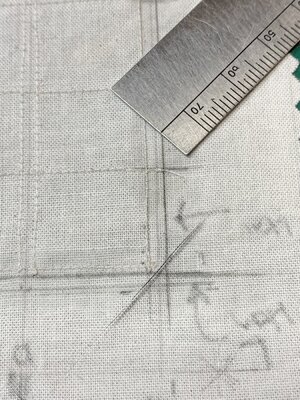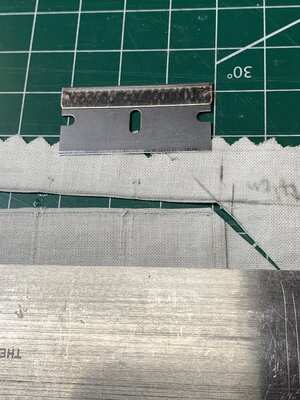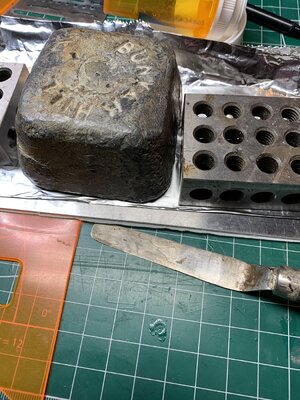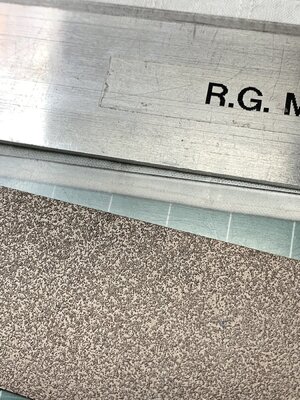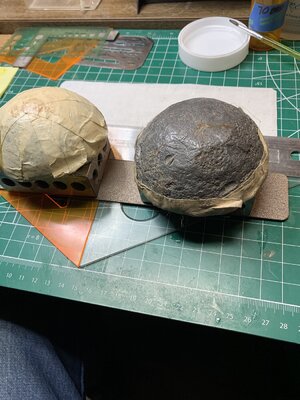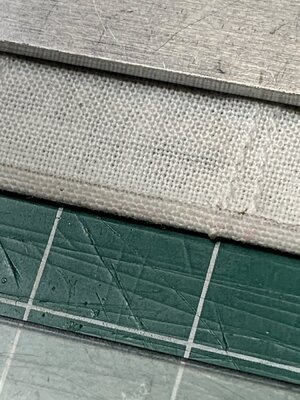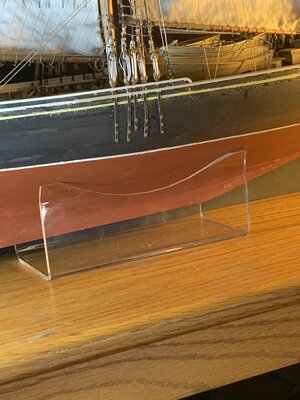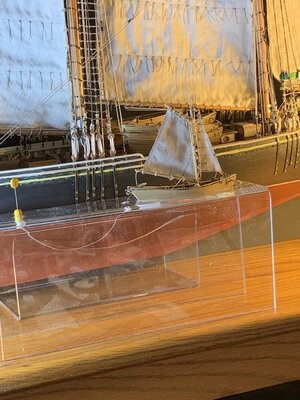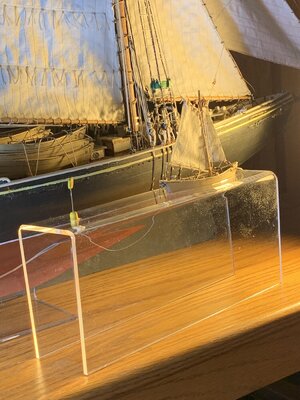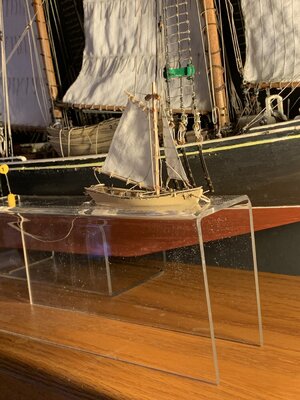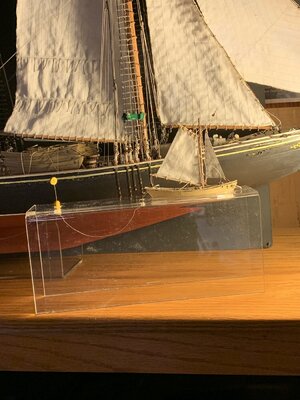Next step in the process after lifting the sail off of the foil when the fabric frey check has set is to cut diagonals across each corner for a folded miter corner:
View attachment 270406
I use only new, unused razor blades for all of the fabric cutting which is fairly easy along the fabric weave lines
View attachment 270407
When all sides are cut I turn it over so that the hem will be on the back or leeward side of the sail and moisten the edge with water using a small brush holding the sail down with a heavy straight edge. The moistened edge is then lifted up with a pallet knife into an upwards direction and slide plastic triange edges to hole it vertical.
View attachment 270408After adjusting the lifted edge I weight it in place to take a set:
View attachment 270409
After an hour or so I remove the weight and have the exposed fabric edge to fold up and over the sail forming the hem which is again secured with a metal straight edge (notice this file was the one used to texture the faux copper ingots faces).
View attachment 270410
I impatiently have to wait for a couple of hours so that the weight presses the fold into a stable hemmed position on the sail. and the following is a closer view of that hem edge which in drying has glued itself together with the fabric edge solution.
View attachment 270411
When all edges are hemmed in this manner I will sew a bolt rope through the hem all around the sail. Then I can begin to sew on edge brail hoops and other rigging items before moving to the sail windward side to sew on the brail rings at the sewn crossing points. I can use some of the drying time to cut the rings off off of a small chain and practice my Irish Tin Whistle and concertina between stages. Slow work at best!!! Rich



